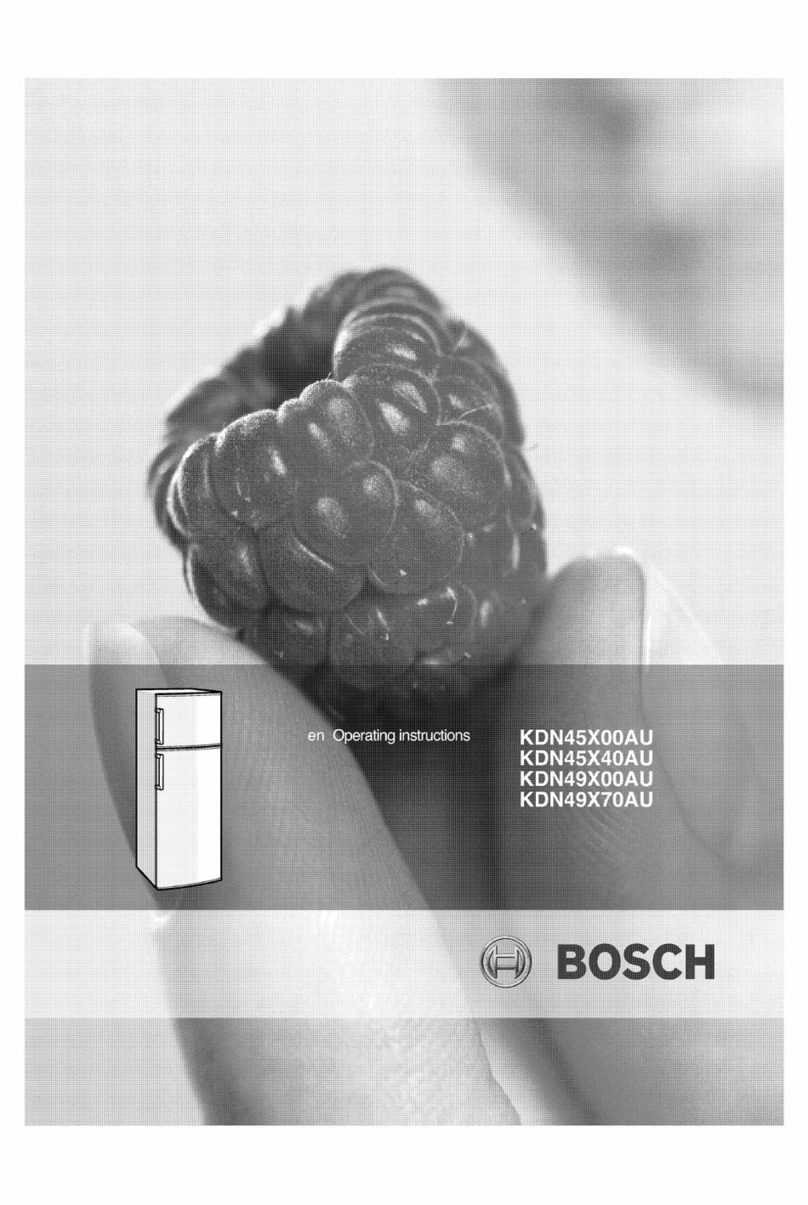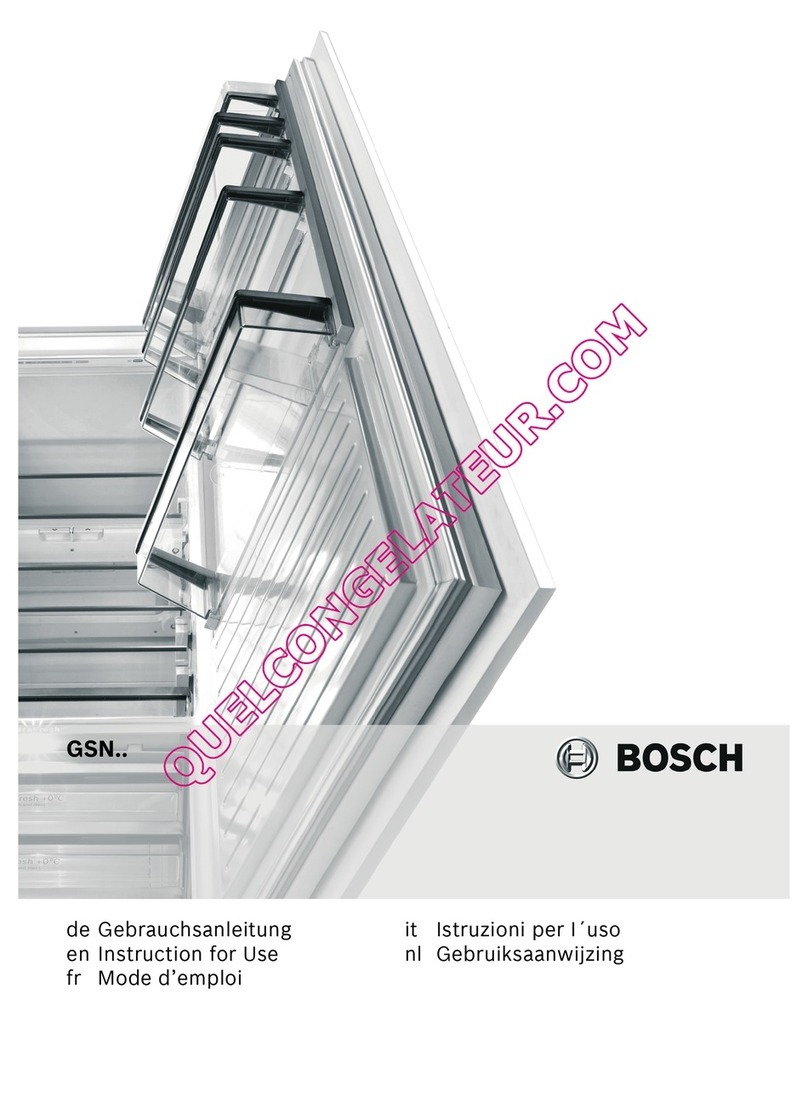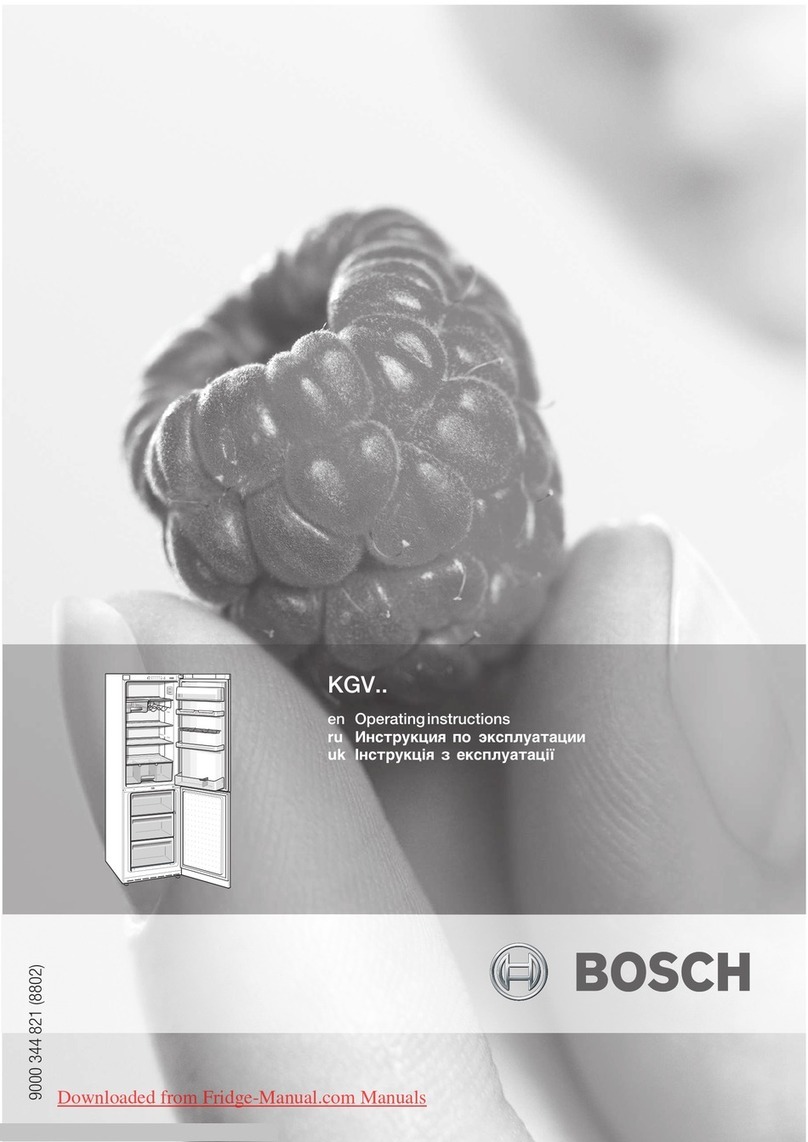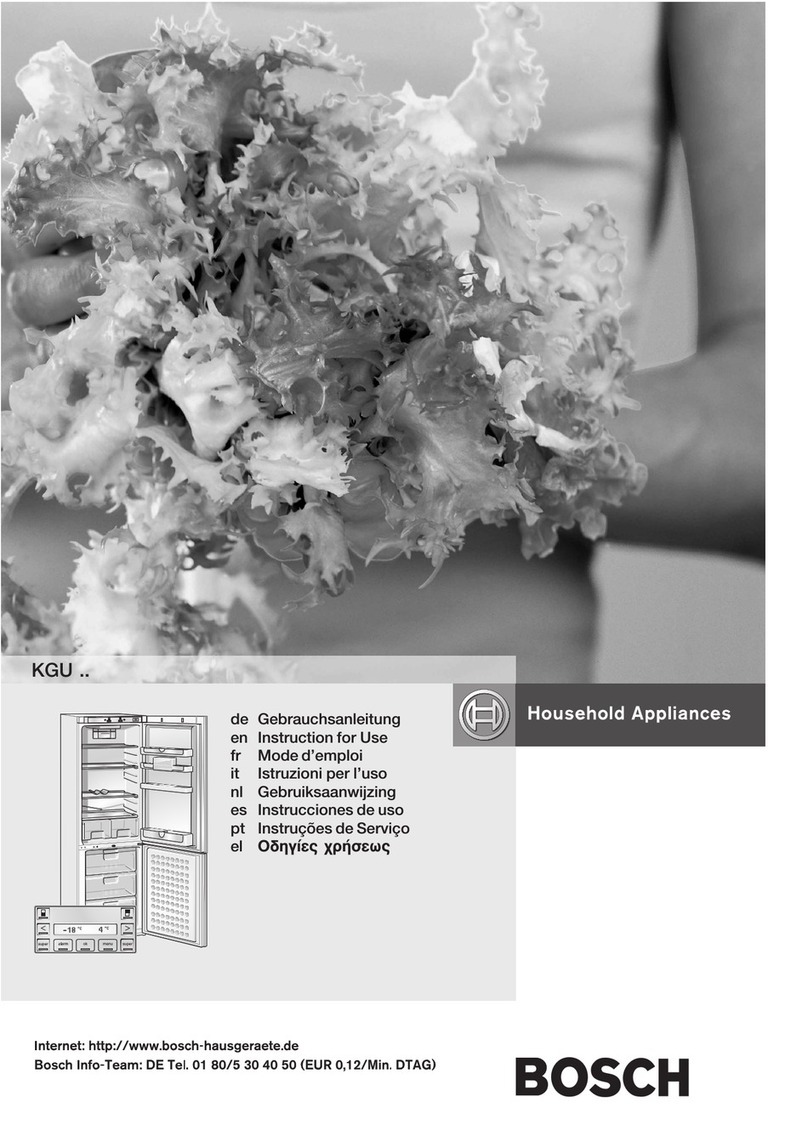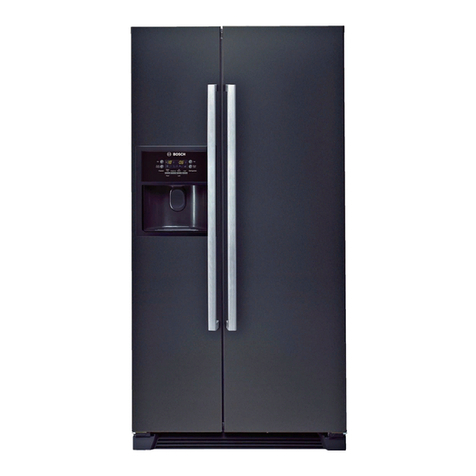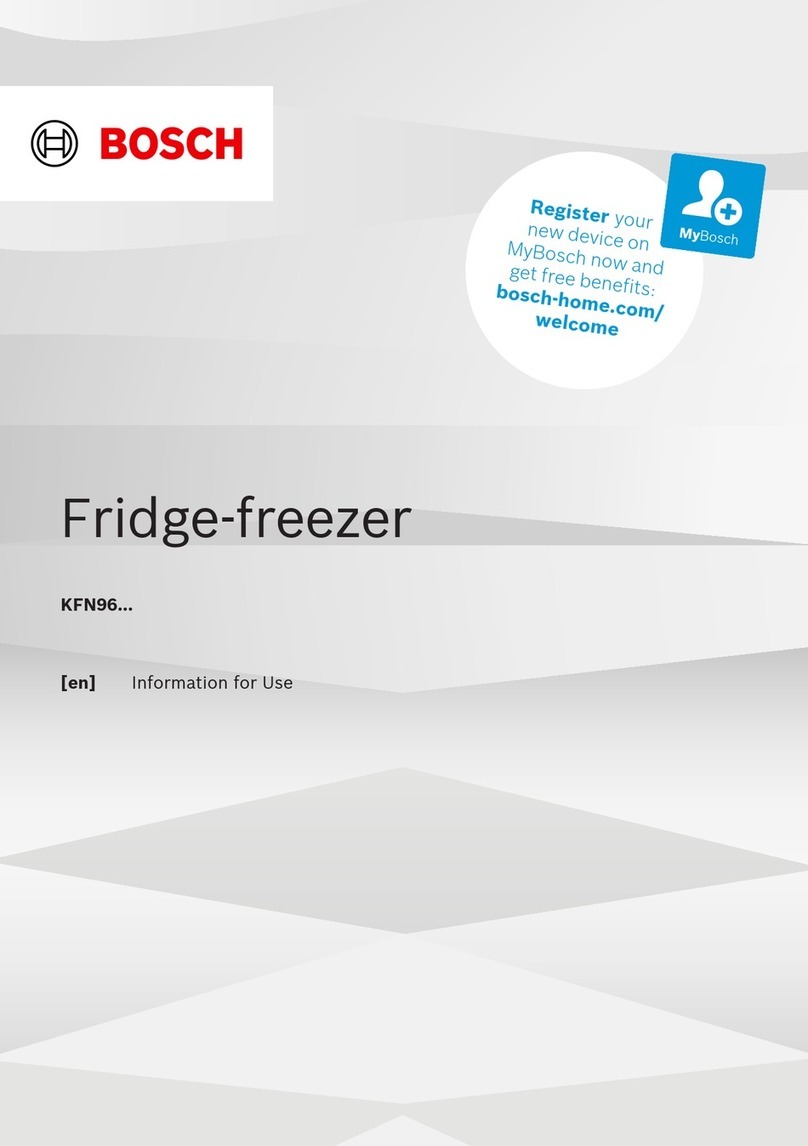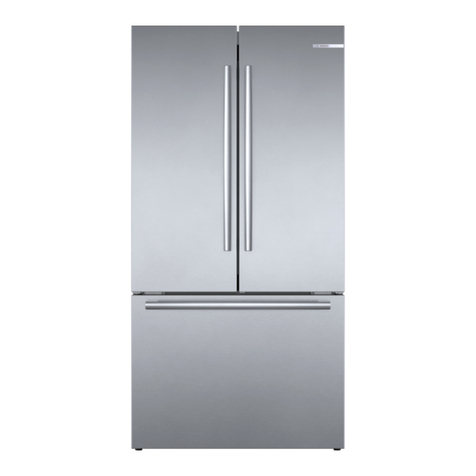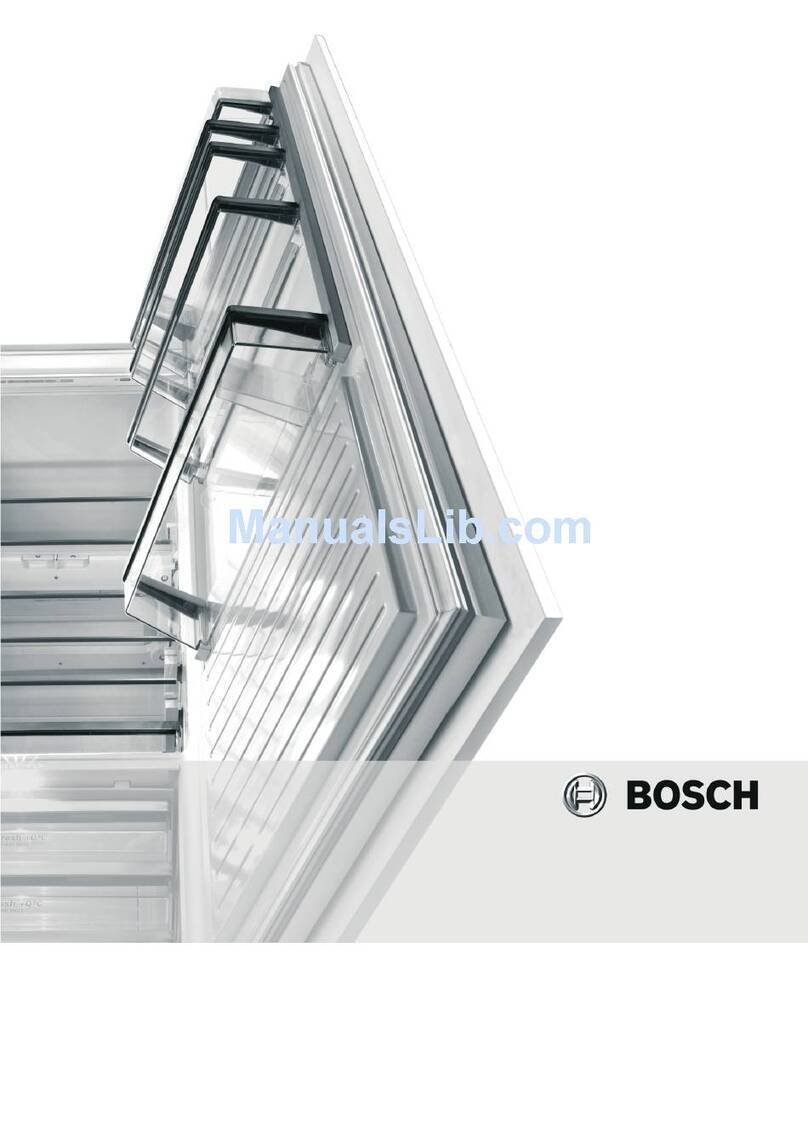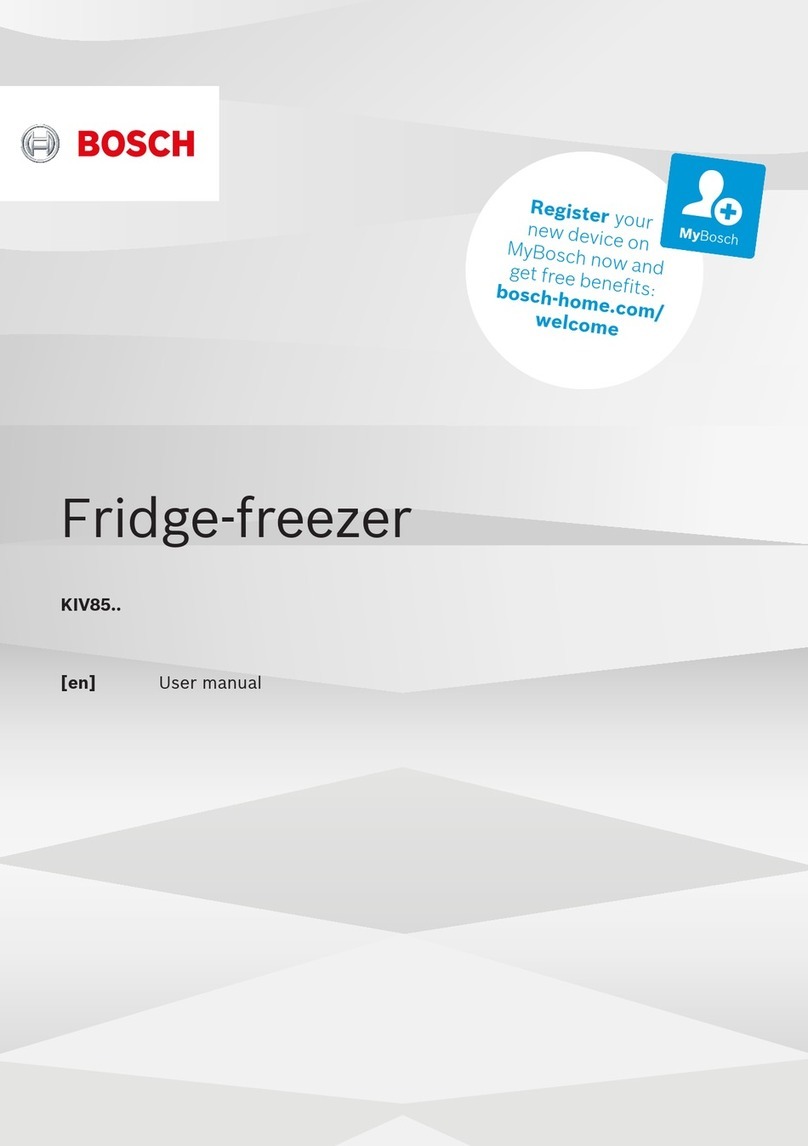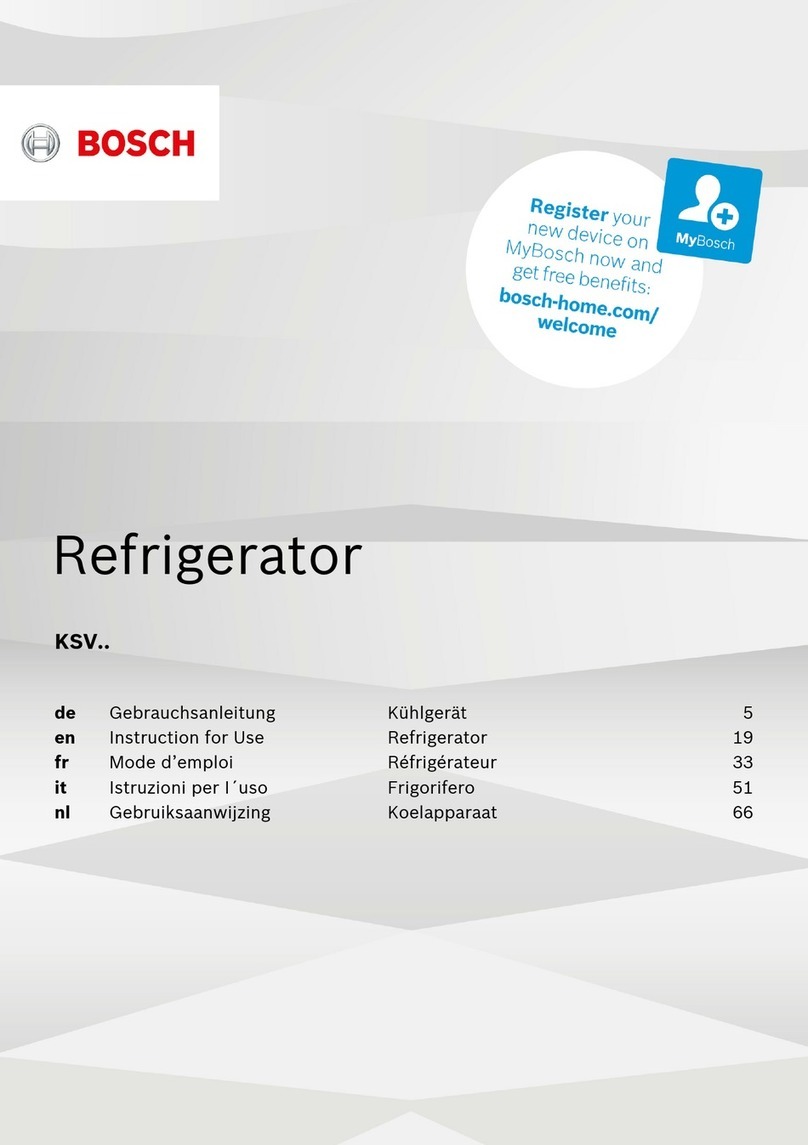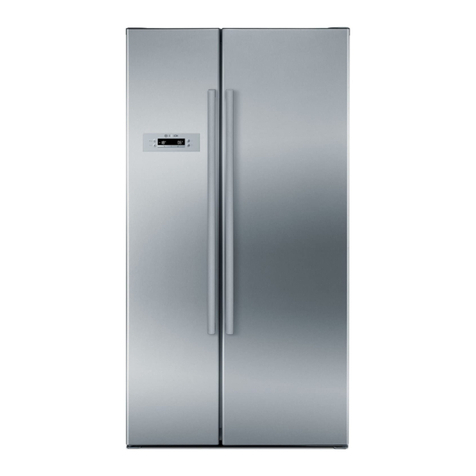de lnhaltsverzeichnis
fr
Table des matieres
Hinweise zur Entsorgung . . . . . . . . . . . . 5 Lebensmittel einordnen . . . . . . . . . . . . . .
11
Conseils pour
Ia
mise au rebut . . . . . . . .
31
Reglage de
Ia
temperature . . . . . . . . . . . 37
Sicherheits- und Warnhinweise . . . . . . . 5
Aufstellen . . . . . . . . . . . . . . . . . . . . . . . . . 7
Wechsel des Turanschlages . . . . . . . . . . 7
Gerat ausrichten . . . . . . . . . . . . . . . . . . . 7
Gerat kennenlernen . . . . . . . . . . . . . . . . . 8
Bedienblende . . . . . . . . . . . . . . . . . . . . . . 8
Raumtemperatur
und Beluftung beachten . . . . . . . . . . . . . 9
Gerat anschlieBen . . . . . . . . . . . . . . . . . . 9
Gerat einschalten . . . . . . . . . . . . . . . . . . . 10
Temperatur einstellen . . . . . . . . . . . . . . . 10
Ausstattung . . . . . . . . . . . . . . . . . . . . . . .
11
Gefrieren und Lagern . . . . . . . . . . . . . . . 12
Frische Lebensmittel einfrieren . . . . . . . . 13
Supergefrieren . : . . . . . . . . . . . . . . . . . . . 13
Max. Gefriervermogen . . . . . . . . . . . . . . 13
Gefriergut auftauen . . . . . . . . . . . . . . . . .
14
Energie sparen . . . . . . . . . . . . . . . . . . . . . 14
Betriebsgerausche . . . . . . . . . . . . . . . . . 15
Kleine Storungen selbst beheben . . . . . . 15
Kundendienst . . . . . . . . . . . . . . . . . . . . . 17
Consignes de securite
et avertissements . . . . . . . . . . . . . . . . . .
31
Installation . . . . . . . . . . . . . . . . . . . . . . . .
34
Inversion du sens d'ouverture
de porte . . . . . . . . . . . . . . . . . . . . . . . . . .
34
Ajuster l'appareil . . . . . . . . . . . . . . . . . . .
34
Presentation de l'appareil . . . . . . . . . . . .
35
Bandeau de commande . . . . . . . . . . . . .
35
Controler
Ia
temperature ambiante
et !'aeration . . . . . . . . . . . . . . . . . . . . . . .
36
Branchement de l'appareil . . . . . . . . . . .
36
Enclenchement de l'appareil . . . . . . . . . .
37
Rangement des produits alimentaires . .
38
Equipement . . . . . . . . . . . . . . . . . . . . . . .
38
Congelation et rangement . . . . . . . . . . .
39
Congelation de produits frais . . . . . . . . .
40
Supercongelation . . . . . . . . . . . . . . . . . .
41
Capacite de congelation maximale . . . .
41
Decongelation des produits . . . . . . . . . .
41
Economies d'energie . . . . . . . . . . . . . . . 42
Bruits de fonctionnement . . . . . . . . . . . . 42
Remedier soi meme ·
aux petites pannes . . . . . . . . . . . . . . . . .
43
Service apres-vente . . . . . . . . . . . . . . . . .
44
en
Contents
it lndice
Information concerning disposal . . . . . . 18 Storing food
in
the appliance
..
, . . . . . .
24
Safety and warning information . . . . . . . 18 Features . . . . . . . . . . . . . . . . . . . . . . . . . . 24 Awertenze per lo smaltimento . . . . . . . . 45 Sistemare gli alimenti . . . . . . . . . . . . . . . .
51
Installation . . . . . . . . . . . . . . . . . . . . . . . .
20
Changing over the
door
hinges . . . . . . .
20
Freezing and storing food . . . . . . . . . . . . 25
Freezing fresh food . . . . . . . . . . . . . . . . .
26
Awertenze
di
sicurezza e pericolo . . . . . 45
lnstallazione . . . . . . . . . . . . . . . . . . . . . . . 47
Dotazione . . . . . . . . . . . . . . . . . . . . . . . . .
51
Congelare e conservare
....
!
..
.
f.
. . . . 52
Aligning the appliance . . . . . . . . . . . . . . .
20
Super . . . . . . . . . . . . . . . . . . . . . . . . . . . .
26
Reversibilita della porta . . . . . . . . . . . . . . 47 Congelamento
di
alimenti freschi . . . . . .
53
Getting
to
kriow your appliance . . . . . . .
21
Max. freezing capacity . . . . . . . . . . . . . .
26
Livellare l'apparecchio
.......
:......
. 47 Superfreezer . . . . . . . . . . . . . . . . . . . . . . 53
Fascia............................
21
Thawing frozen food . . . . . . . . . . . . . . . .
27
Conoscere l'apparecchio . . . . . . . . . . . . 48 Max. capacita
di
congelamento . . . . . . .
53
Observe ambient temperature
and ventilation . . . . . . . . . . . . . . . . . . . . . 22
Connecting the appliance . . . . . . . . . . . . 22
Switching on the appliance . . . . . . . . . . .
23
Selecting the temperature
........
·.
. . .
23
Tips for saving energy . . . . . . . . . . . . . . . 27
Operating noises . . . . . . . . . . . . . . . . . . .
28
Eliminating minor faults yourself . . . . . . .
29
Customer service . . . . . . . . . . . . . . . . . .
30
Pannello comandi . . . . . . . . . . . . . . . . . . 48
Attenzione alia temperatura
ambiente ed alia ventilazione . . . . . . . . . 49
Collegare l'apparecchio . . . . . . . . . . . . . 49
Accendere l'apparecchio . . . . . . . . . . . .
50
Scongelamento
dei prodotti congelati . . . . . . . . . . . . . . .
54
Risparmiare energia . . . . . . . . . . . . . . . .
54
Rumori di funzionamento . . . . . . . . . . . .
55
Eliminare da soli piccoli guasti . . . . . . . .
56
Regolare
Ia
temperatura . . . . . . . . . . . . .
50
Servizio assistenza clienti . . . . . . . . . . . .
57




